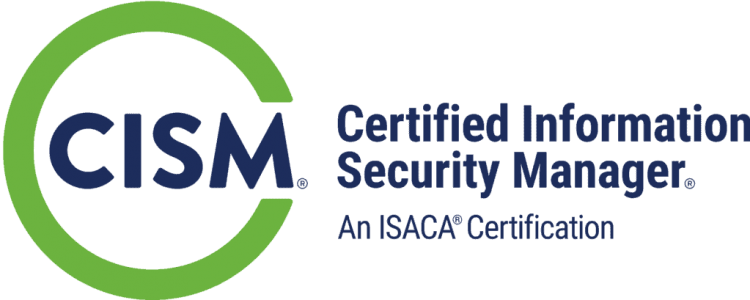(ISC)², CBK, and CISSP are registered marks of the International Information Systems Security Certification Consortium in the United States and other countries.
Access, Excel, Hyper-V, Outlook, Microsoft, SharePoint, Silverlight, SQL Server, Visual Basic, Win32, Windows, Windows PowerShell and Windows Server are registered trademarks of Microsoft Corporation.
Adobe, Acrobat, Flash and Photoshop are registered trademarks of Adobe Systems Incorporated in the United States and/or other countries
Amazon Web Services is a trademark of Amazon.com, Inc.
Android is a trademark of Google Inc.
APMG-International Change Management, The APMG-International Change Management and Swirl Device logo, APMG-International AgilePM and The APMG-International AgilePM and Swirl Device logo are trademarks of The APM Group Limited.
Certified Ethical Hacker (CEH) is a registered trademark of EC-Council.
Cisco is a registered trademark of Cisco Systems Inc.
CMMI® is registered in the U.S. Patent and Trademark Office by Carnegie Mellon University.
IIBA®, the IIBA® logo, BABOK® and Business Analysis Body of Knowledge® are registered trademarks owned by International Institute of Business Analysis. These trademarks are used with express permission of International Institute of Business Analysis.
CAPM, Certified Associate in Project Management (CAPM), PMP, Project Management Professional (PMP), PMI-ACP, PMI Agile Certified Practitioner (PMI-ACP), PMBOK, and the R.E.P. Logo are marks of Project Management Institute, Inc.
CBAP® and CCBA® are registered certification marks owned by International Institute of Business Analysis. These trademarks are used with express permission of International Institute of Business Analysis.
Certified Business Analysis Professional, Certification of Competency in Business Analysis, Endorsed Education Provider, EEP and the EEP logo are trademarks owned by International Institute of Business Analysis. These trademarks are used with express permission of International Institute of Business Analysis.
COBIT is a trademark of ISACA, registered in the U.S. and other countries.
COBIT® 5 is a trademark of the Information Systems Audit and Control Association® (ISACA®). This product includes COBIT® 5, used by permission of ISACA®. 2012© ISACA®. All rights reserved.
CompTIA A+ and CompTIA Network+ are registered trademarks of the Computing Technology Industry Association, Inc.
CompTIA CASP and CompTIA Cloud Essentials are trademarks of the Computing Technology Industry Association, Inc.
GIAC and associated certifications: GSEC, GPEN, GXPN, GCFW, GCUX, GCWN, GCIA, GREM are registered trademarks of the SANS Institute
Hadoop is a registered trademark of the Apache Software Foundation.
Hibernate is a registered trademark and servicemark of Red Hat, Inc.
iPad, iPhone, Mac and Mac OS are trademarks of Apple Inc., registered in the U.S. and other countries.
ITIL®, PRINCE2® and MSP® are registered trademarks of AXELOS Limited.
JavaScript, JavaServer, JavaServer Pages, Enterprise JavaBeans, MySQL and PL/SQL are trademarks of Oracle Corporation.
Linux is a registered trademark of Linus Torvalds.
Java and Oracle are registered trademarks of Oracle Corporation.
Palo Alto Networks, PAN-OS, App-ID, Content-ID, Url-ID, GlobalProtect, Wildfire, and Panorama are trademarks of Palo Alto Networks, Inc.
"Python" is a registered trademark of the Python Software Foundation, used by Learning Tree International with permission from the Foundation.
Red Hat and Red Hat Enterprise Linux are registered trademarks of Red Hat, Inc. in the United States and other countries.
Red Hat Middleware, LLC. All rights reserved.
SANS and associated certifications: GSEC, GPEN, GXPN, GCFW, GCUX, GCWN, GCIA, GREM are registered trademarks of the SANS Institute
SAP Crystal Reports is the registered trademark of SAP AG in Germany and in several other countries.
Scrum Alliance REPSM is a service mark of Scrum Alliance, Inc. Any unauthorized use is strictly prohibited.
TechNow® is a registered trademark of TechNow Incorporated.
The CompTIA Authorized Quality Curriculum logo is a proprietary trademark of CompTIA. All rights reserved.
The Swirl logo™ is a trademark of AXELOS Limited.
Transact-SQL is a trademark of Sybase, Inc.
UNIX is a registered trademark of The Open Group.
VMware is a registered trademark of VMware, Inc. in the United States and/or other jurisdictions.
XML is a trademark of MIT, INRIA or Keio on behalf of the World Wide Web Consortium.
